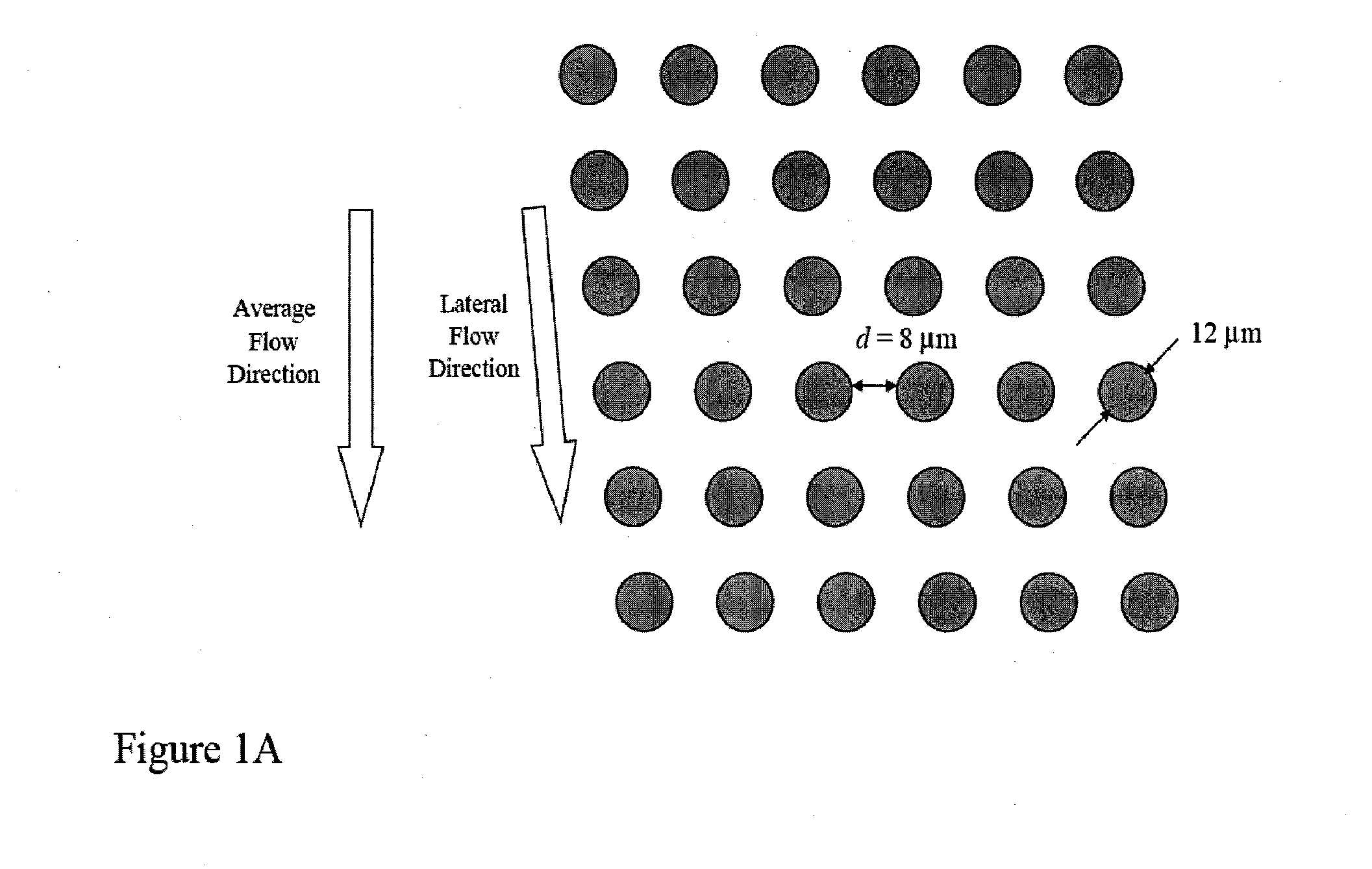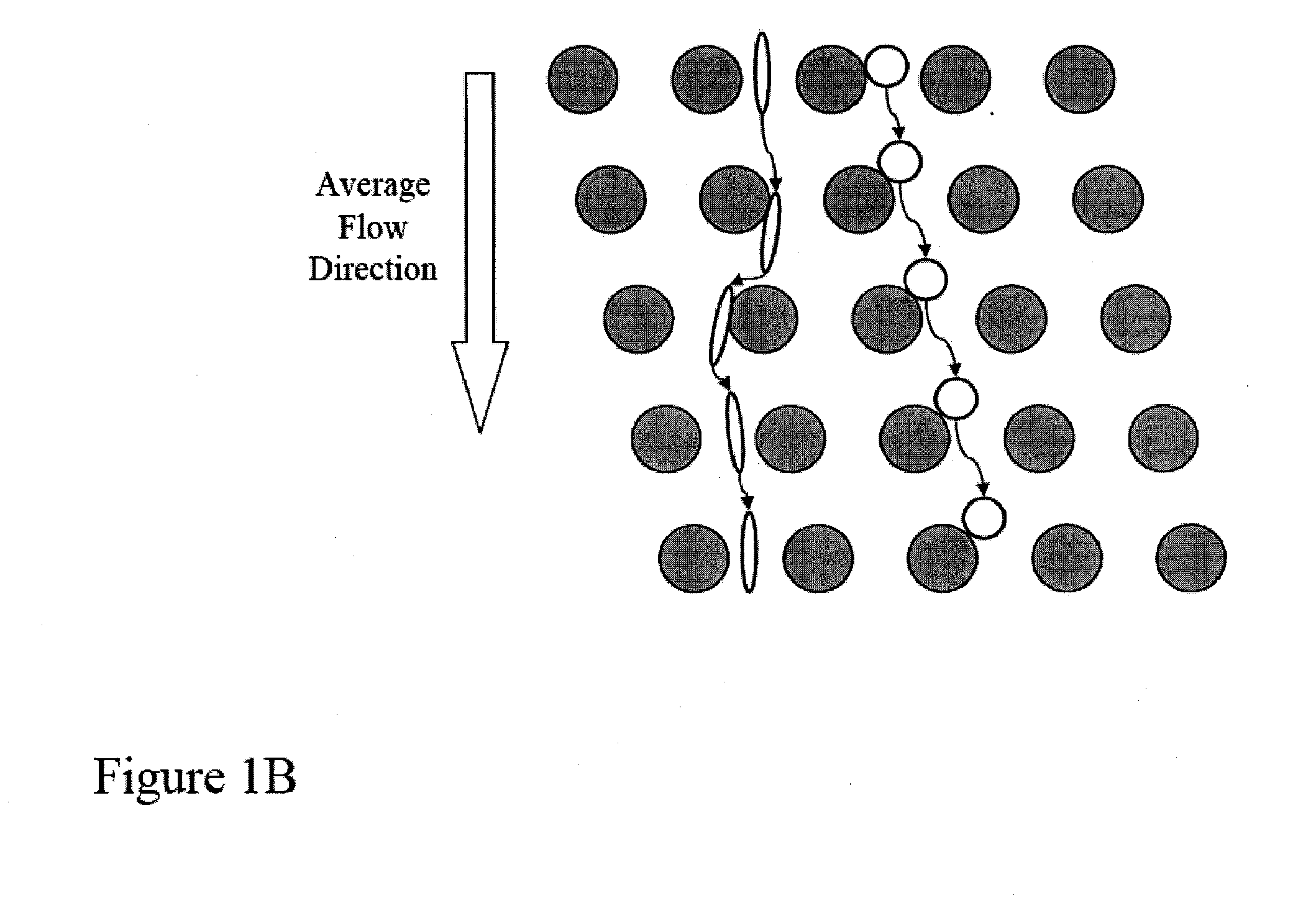Analysis of rare cell-enriched samples
a cell enrichment and sample technology, applied in the field of rare cell enrichment sample analysis, can solve the problems of unreliable testing, many cancers continue to go undetected, and the amniocentesis and chorionic villus sampling (cvs) are potentially harmful to the mother and the fetus
- Summary
- Abstract
- Description
- Claims
- Application Information
AI Technical Summary
Benefits of technology
Problems solved by technology
Method used
Image
Examples
example 1
Separation of Fetal Cord Blood
[0159]FIGS. 14A-14D shows a schematic of the device used to separate nucleated cells from fetal cord blood.
[0160]Dimensions: 100 mm×28 mm×1 mm
[0161]Array design: 3 stages, gap size=18, 12 and 8 μm for the first, second and third stage, respectively.
[0162]Device fabrication: The arrays and channels were fabricated in silicon using standard photolithography and deep silicon reactive etching techniques. The etch depth is 140 μm. Through holes for fluid access are made using KOH wet etching. The silicon substrate was sealed on the etched face to form enclosed fluidic channels using a blood compatible pressure sensitive adhesive (9795, 3M, St Paul, Minn.).
[0163]Device packaging: The device was mechanically mated to a plastic manifold with external fluidic reservoirs to deliver blood and buffer to the device and extract the generated fractions.
[0164]Device operation: An external pressure source was used to apply a pressure of 2.0 PSI to the buffer and blood r...
example 2
Isolation of Fetal Cells from Maternal Blood
[0168]The device and process described in detail in Example 1 were used in combination with immunomagnetic affinity enrichment techniques to demonstrate the feasibility of isolating fetal cells from maternal blood.
[0169]Experimental conditions: blood from consenting maternal donors carrying male fetuses was collected into K2EDTA vacutainers (366643, Becton Dickinson, Franklin Lakes, N.J.) immediately following elective termination of pregnancy. The undiluted blood was processed using the device described in Example I at room temperature and within 9 hrs of draw. Nucleated cells from the blood were separated from enucleated cells (red blood cells and platelets), and plasma delivered into a buffer stream of calcium and magnesium-free Dulbecco's Phosphate Buffered Saline (14190-144, Invitrogen, Carlsbad, Calif.) containing 1% Bovine Serum Albumin (BSA) (A8412-100ML, Sigma-Aldrich, St Louis, Mo.). Subsequently, the nucleated cell fraction was ...
example 3
Amplification and Sequencing of STRs for Fetal Diagnosis
[0172]Fetal cells or nuclei can be isolated as describe in the enrichment section or as described in example 1 and 2. DNA from the fetal cells or isolated nuclei from fetal cells can be obtained using any methods known in the art. STR loci can be chosen on the suspected trisomic chromosomes (X, 13, 18, or 21) and on other control chromosomes. These would be selected for high heterozygosity (variety of alleles) so that the paternal allele of the fetal cells is more likely to be distinct in length from the maternal alleles, with resulting improved power to detect. Di-, tri-, or tetra-nucleotide repeat loci can be used. The STR loci can then be amplified according the methods described in the amplification section.
[0173]For instance, the genomic DNA from the enriched fetal cells and a maternal control sample can be fragmented, and separated into single strands. The single strands of the target nucleic acids would be bound to beads...
PUM
| Property | Measurement | Unit |
|---|---|---|
| size | aaaaa | aaaaa |
| size | aaaaa | aaaaa |
| time | aaaaa | aaaaa |
Abstract
Description
Claims
Application Information
 Login to View More
Login to View More - R&D
- Intellectual Property
- Life Sciences
- Materials
- Tech Scout
- Unparalleled Data Quality
- Higher Quality Content
- 60% Fewer Hallucinations
Browse by: Latest US Patents, China's latest patents, Technical Efficacy Thesaurus, Application Domain, Technology Topic, Popular Technical Reports.
© 2025 PatSnap. All rights reserved.Legal|Privacy policy|Modern Slavery Act Transparency Statement|Sitemap|About US| Contact US: help@patsnap.com



